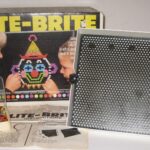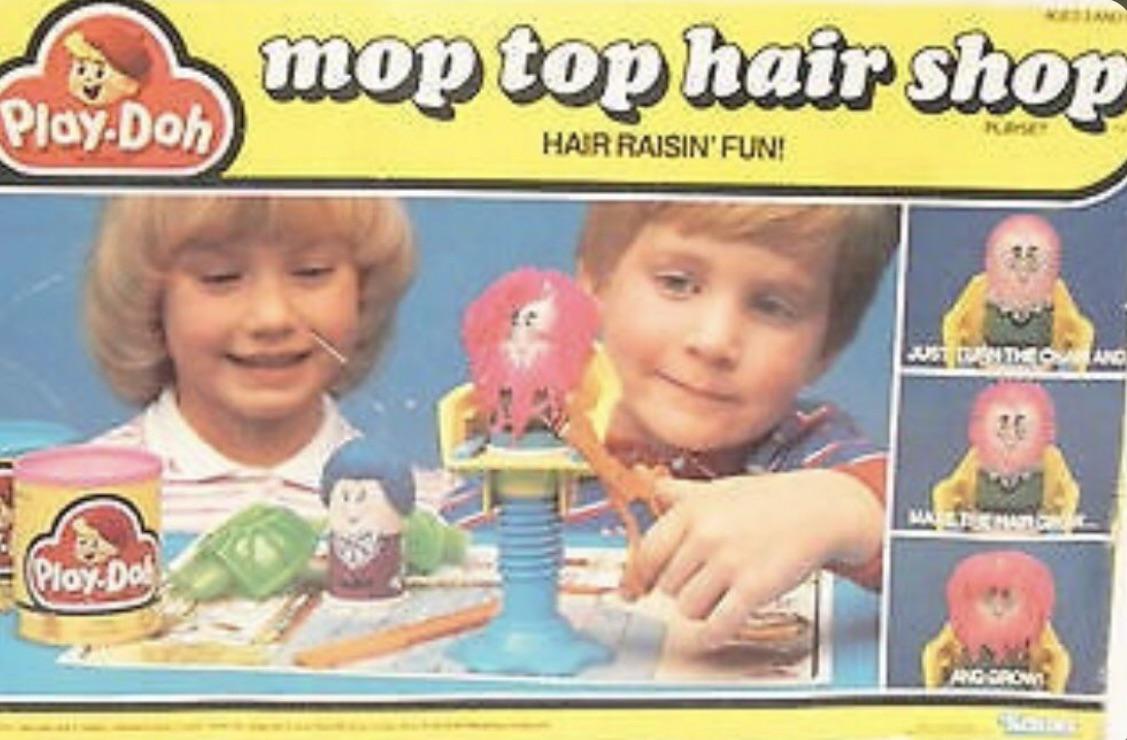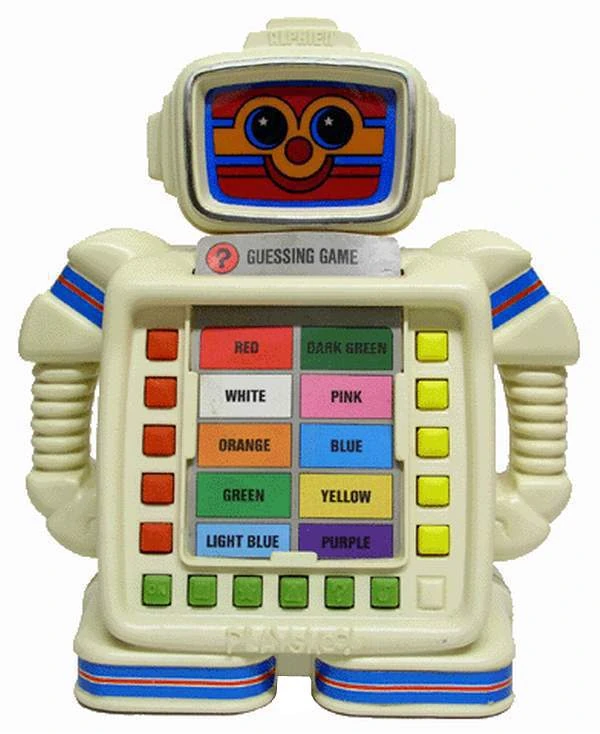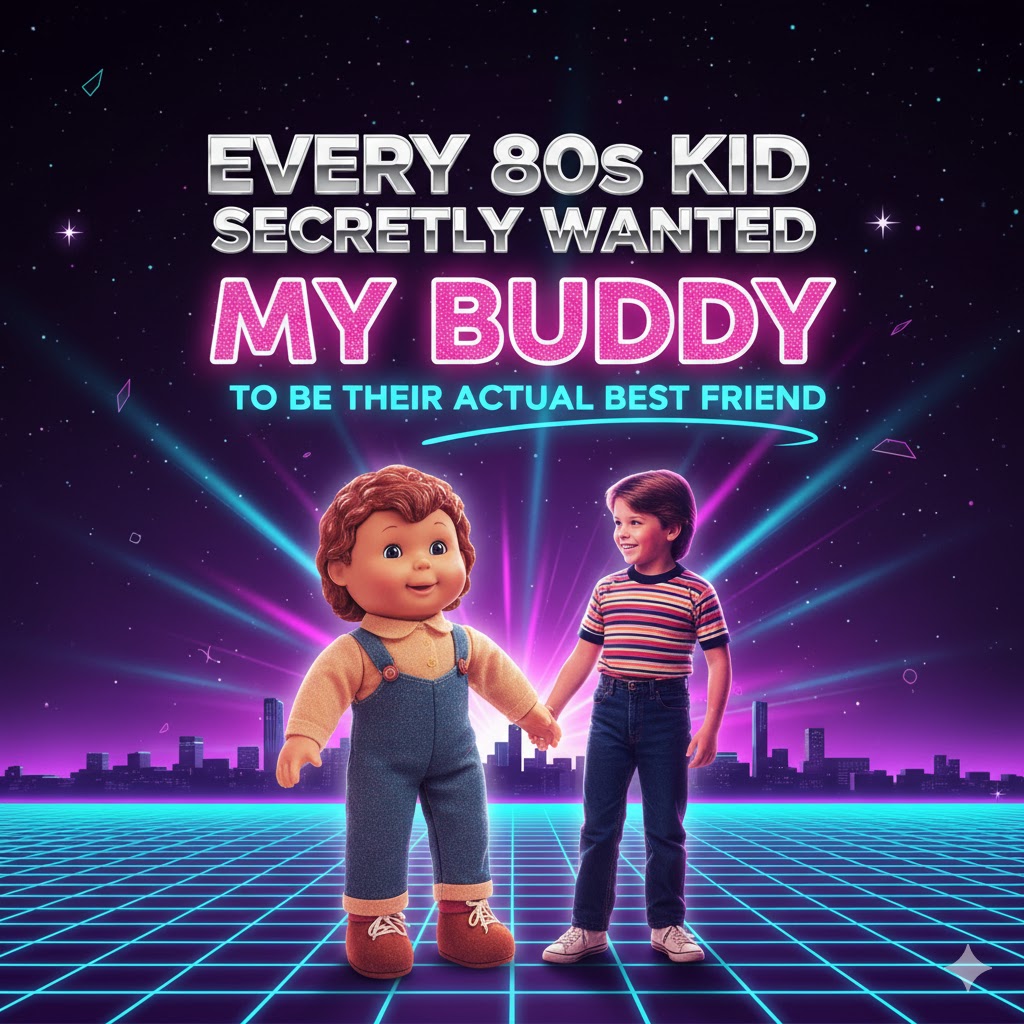 The 1980s were a golden age of toys, a time when plastic, color, and imagination fused into unforgettable childhood memories. Amid the action figures, dolls, and video game consoles, one toy stood out—not for its speed or sound, but for its radiant simplicity. Lite-Brite, with its glowing screen and rainbow-colored pegs, invited children to become miniature artists using nothing but light and creativity. It didn’t move, talk, or explode, but it captivated millions. For a generation growing up in the glow of neon culture and arcade aesthetics, Lite-Brite was magic in a box.
The 1980s were a golden age of toys, a time when plastic, color, and imagination fused into unforgettable childhood memories. Amid the action figures, dolls, and video game consoles, one toy stood out—not for its speed or sound, but for its radiant simplicity. Lite-Brite, with its glowing screen and rainbow-colored pegs, invited children to become miniature artists using nothing but light and creativity. It didn’t move, talk, or explode, but it captivated millions. For a generation growing up in the glow of neon culture and arcade aesthetics, Lite-Brite was magic in a box.
First introduced by Hasbro in 1967, Lite-Brite had already been around for over a decade by the time the 1980s rolled in. But it was during this colorful and creative decade that the toy truly came into its own. While many toys of the era relied on fast action or pop culture branding, Lite-Brite offered a different kind of experience—one that was quiet, focused, and artistic. It was tactile, visual, and meditative. You could sit cross-legged on the carpet, dim the lights, and disappear for hours into a glowing masterpiece of your own making.
The concept was as ingenious as it was simple. The toy consisted of a light box with a black, pegboard-like screen. Kids would place colored translucent plastic pegs into the holes to create illuminated images. The pegs came in a rainbow of bright colors—red, blue, green, yellow, orange, and purple—and when pushed into the screen, they would light up thanks to a small bulb inside the box. Lite-Brite also came with black paper templates that featured popular designs—flowers, animals, clowns, cartoon characters—marked with letters that matched the peg colors. Kids could follow the guides like a coloring book by light, or throw the templates aside and freestyle their own creations.
What made Lite-Brite so special, especially in the 1980s, was how it tapped into the era’s visual language. This was a decade defined by neon signs, arcades, synthwave aesthetics, and bright, bold visuals. Lite-Brite fit right in. Its glowing colors felt modern and futuristic, like something you’d see in a music video or a sci-fi movie. In an age where kids were beginning to explore digital graphics through early computers and video games, Lite-Brite was a kind of analog cousin—offering pixels by hand.
Commercials for Lite-Brite in the ’80s were warm, cheerful, and hypnotic. A catchy jingle sang, “Lite-Brite, making things with light!”—a line so memorable it still lives in the heads of many who grew up during the decade. These ads featured happy kids in darkened rooms, their faces bathed in the glow of their creations, their hands methodically plugging pegs into patterns that came to life one dot at a time. The magic of it was hard to resist.
Part of Lite-Brite’s enduring charm was how it encouraged a slower kind of play. Unlike video games or action toys, which offered instant feedback and excitement, Lite-Brite required patience. Each picture took time. Each peg had to be selected, positioned, and pushed into place. The process was deliberate and calming. It promoted focus, concentration, and visual-spatial skills. Parents loved it for this reason—it was quiet, non-destructive, and screen-free, yet still held their kids’ attention for hours. And kids loved the reward: turning off the lights and seeing their image glow to life like a homemade stained-glass window.
By the mid-1980s, Lite-Brite had expanded its offerings to keep pace with pop culture trends. New templates featured licensed characters like My Little Pony, He-Man, Strawberry Shortcake, The Smurfs, and even Transformers. This gave the toy renewed relevance in a crowded toy market where brand tie-ins were king. Kids could recreate their favorite characters in glowing color, combining fandom with creativity. The pegs stayed the same, but the content evolved to meet the decade’s tastes.
The toy also appealed across age groups. Younger children could enjoy the simple pleasure of inserting pegs and seeing them light up, even without completing a full image. Older kids could take on more elaborate designs or create their own from scratch. Some children took Lite-Brite very seriously, crafting detailed, complex works and displaying them proudly in their rooms like illuminated art. It was one of the few toys of the time that felt genuinely artistic without being marketed as educational. It didn’t teach math or reading—it taught patience, color theory, and visual composition, all without saying so.
Of course, like many toys from the ’80s, Lite-Brite wasn’t without its quirks. The black paper templates were single-use and would tear easily, especially if a peg was removed or adjusted. Running out of templates or losing pegs meant improvising. And while the toy was relatively simple to use, it did require adult supervision in some cases, especially for replacing the light bulb or managing the electrical cord. Still, none of these drawbacks ever dimmed its appeal.
As the ’80s gave way to the ’90s and beyond, Lite-Brite continued to evolve. New versions appeared with updated designs, peg shapes, and even digital screens. But for many, it’s the original—or at least the classic 1980s iteration—that remains the most iconic. That chunky beige box with its mechanical click, the satisfying “snap” of a peg into place, and the warm buzz of the bulb behind the screen—it all adds up to a sensory memory that’s hard to shake.
Today, Lite-Brite is remembered with deep nostalgia. Vintage sets are sought after by collectors, and modern reissues have found their way into the hands of a new generation. The toy has even inspired artists and designers, some of whom use Lite-Brite as a medium for real gallery pieces. What began as a simple child’s toy has become a cultural artifact—an object that represents not just play, but a whole era’s approach to creativity.
In the glowing legacy of 1980s toys, Lite-Brite shines in its own special way. It didn’t talk. It didn’t fight. It didn’t move. What it did—what it still does—is give children the power to make something beautiful with nothing but a handful of pegs and a little patience. In a decade obsessed with speed and spectacle, Lite-Brite offered a quiet kind of wonder. It asked kids to slow down, to focus, and to light up the darkness—one tiny dot at a time.


